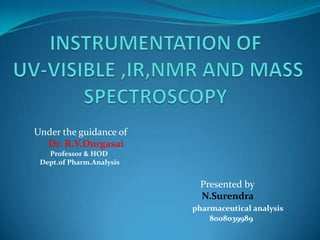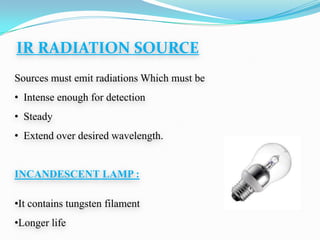This document provides an overview of instrumentation used in UV-Visible spectroscopy. It describes the key components of a UV-Vis spectrophotometer including the light source, monochromator, sample cell, detector, and recorder. Common light sources for the UV and visible regions are discussed such as deuterium, xenon discharge, and tungsten lamps. Filters and diffraction gratings are described as types of monochromators. The functions of the sample cell and popular detector types including photovoltaic cells, photocells, and photomultiplier tubes are summarized. Finally, single beam and double beam instrument designs are contrasted.















































































